Zombies, Zombies...Everywhere!
What are Zombies?
Zombies are companies that earn just enough money to continue operating and service debt but are unable to pay off their debt. Such companies, given that they just scrape by meeting overheads (wages, rent, interest payments on debt, for example), have no excess capital to invest to spur growth. Zombie companies are typically subject to higher borrowing costs and may be one just event—market disruption or a poor quarter performance—away from insolvency or a bailout. Zombies are especially dependent on banks for financing, which is fundamentally their life support. Zombie companies are also known as the "living dead" or "zombie stocks”.
—Will Kenton, Investopedia
So why the discussion about “zombie” companies? Well, I became intrigued with the recent market recovery in the US and I wanted to assess its quality. Given the disruption in business activity due to COVID-19, it made sense to identify the companies in the US that were having troubles paying their bills and stay away from them. Also, it stands to reason, that those businesses that were in poor financial shape before the spread of the virus are certainly not going to improve in the crisis. So, we need to be aware!
I used a simple metric to perform the analysis: interest coverage ratio. The interest coverage ratio expresses the ratio of EBIT (earnings before interest and taxes) to interest expense. Any company that has a coverage ratio below one cannot meet its interest obligations through earnings. In other words, the company has to borrow, or raise capital in the equity markets, to cover expenses. I used the last 12 months of trailing data in the analysis for both inputs. I also used the Russell 3000 index to represent the widest definition of the US market to ensure exposure to mid and small capitalization businesses.
Here are the results:
- Over 19% of the stocks in US market cannot meet their interest expenses through earnings[1]. In other words, 1-in-5 should be scrutinized further to determine if this is a secular trend or a company specific anomaly. It is worth noting that roughly 25% of the Russell 3000 is in mid-to-small capitalization companies. Arguably, smaller-sized businesses have greater financial hurdles, relative to larger businesses, through higher transaction fees and lending costs.
- The data used largely represents the time-period before the impact of COVID-19 ending on March 31, 2020. In other words, the percentage should increase as more companies deal with the economic impact of lower revenues over the next few quarters. Just because a stock’s price is advancing, doesn’t mean the underlying fundamentals are improving. Time will tell if this disconnect is settled to the upside or the downside.
- The longer-term trend of the interest coverage ratio has been declining. I would like to draw your attention to the following graph that maps out this ratio over the past 10 years (above plot) and the relative rise in corporate debt (below). As you can see, this ratio has deteriorated over the past 10 years and now sits 17.5% below its average. At the same time, US corporate debt-to-equity has increased by 33%. Clearly, US companies have been leveraging their balance sheets (i.e., taking on more financial risk) though borrowings and earnings are not keeping pace to offset the additional costs.

In conclusion, zombies exist in the US, but we just don’t want to think about them. The robust returns of the past 10 years have led to increased leverage by companies at very low interest rates. The reasons for this are many: share buy-backs, performance-based executive compensation, cheap access to capital, and the ‘great Fed put’, to name just a few. The troubling fact remains that the legions are growing and the trend for corporate America is worsening. I believe that this analysis provides us an opportunity. As investors we need to refocus on the long-term fundamental drivers of value—earnings—or we may unknowingly join the zombie nation.
[1] Source is YCharts utilizing Factset data. The screen was run as of July 15, 2020 and uses the most recent quarterly data ending in March 31, 2020.
The enclosed article expresses the opinions of writer, Patrick A. Choquette, and not necessarily those of Raymond James Ltd. (“RJL”). Statistics, factual data and other information are from sources believed to be reliable but accuracy cannot be guaranteed. It is furnished on the basis and understanding that Raymond James Ltd. is to be under no liability whatsoever in respect thereof. It is for information purposes only and is not to be construed as an offer or solicitation for the sale or purchase of securities.
Information provided in the attached report is general in nature and should NOT be construed as providing legal, accounting and/or tax advice. Should you have any specific questions and/or issues in these areas, please consult your legal, tax and/or accounting advisor.This provides links to other Internet sites for the convenience of users. Raymond James Ltd. is not responsible for the availability or content of these external sites, nor does Raymond James Ltd endorse, warrant or guarantee the products, services or information described or offered at these other Internet sites. Users cannot assume that the external sites will abide by the same Privacy Policy which Raymond James Ltd adheres to.
Information in this article is from sources believed to be reliable, however, we cannot represent that it is accurate or complete. It is provided as a general source of information and should not be considered personal investment advice or solicitation to buy or sell securities. The views are those of the author, Patrick Choquette, and not necessarily those of Raymond James Ltd. Investors considering any investment should consult with their Investment Advisor to ensure that it is suitable for the investor’s circumstances and risk tolerance before making any investment decision.
Raymond James Ltd. is a Member - Canadian Investor Protection Fund.



